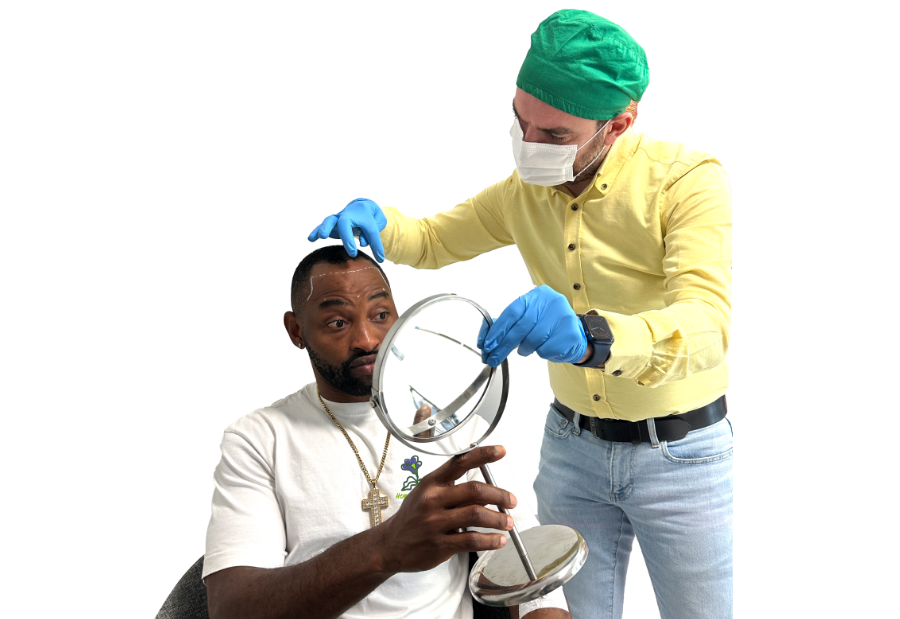Get 25% OFF Hair Transplant Packages This New Year — Book Today!
Hair Transplant in Winter vs. Summer: Which Season Gives Better Results?

Planning your hair transplant? Timing can actually shape your recovery, results, and comfort. While most people worry about choosing the right clinic or method, fewer stop to ask, “When’s the best time to get a hair transplant?” Winter and summer both have their perks and their pitfalls. Let’s break it all down so you can pick a season that gives your grafts the best chance to thrive.
If you are wondering when to get a hair transplant, this detailed guide explains the ideal timing and factors to consider before making your decision.
Why Timing Matters in Hair Transplant Recovery
Most folks zero in on cost and technique. That makes sense. But hair transplant time plays a quiet yet powerful role in how your body heals. Different seasons mean different temperatures, humidity levels, lifestyle rhythms, and even social settings. That’s why figuring out the best time to get a hair transplant can affect everything, from infection risk to how discreetly you recover.
Some swear winter is the right time for hair transplant procedures. Others prefer to go under the needle during the summer lull. The truth is that both options are effective; it simply depends on which one aligns better with your lifestyle.
Benefits of Getting a Hair Transplant in Winter
Winter offers a surprisingly ideal climate for post-surgery recovery.
Cooler Temperatures Are Your Friend
Sweating is minimal when it’s chilly outside. That’s great news for your grafts! Less sweating means less irritation and less risk for infection. When you’re dry and clean, it is easy to stay dry and clean and healing is well on its way.
Sun’s Less of a Problem
Hats and hoodies are part of everyday winter wear, so you can protect your scalp from harsh UV rays without looking like you’re hiding something. That natural cover makes winter a solid choice when you want to recover without fuss.
Healing in Peace and Privacy
Holiday breaks and long weekends give you the perfect window to heal without your coworkers asking too many questions. If you want privacy, winter may be the best time to get a hair transplant, as you can heal quietly during year-end downtime.
Low-Key Lifestyle Supports Recovery
Let’s be real, no one’s organizing beach parties in January. It’s the stay-at-home season. That means fewer interruptions, more time to follow your aftercare, and less temptation to jump into strenuous activity.
Challenges of Winter Transplants
Of course, winter isn’t all cozy blankets and smooth recoveries. Here are a few downsides to keep in mind:
- Cold air can dry out your scalp, especially in low-humidity areas
- Indoor heating might lead to irritation or flakiness
- Hats, if too tight or itchy, can disturb the new grafts
Moisturising properly and choosing gentle, breathable headwear can help avoid most of these issues.
Benefits of Hair Transplant in Summer
Now for the sunny side. There’s a reason many people say summer is the best time to get a hair transplant, especially if they want results to show up by winter.
Warm Weather = Better Circulation
Higher temperatures boost blood flow, which may help nourish those freshly transplanted follicles. That could lead to quicker healing and stronger regrowth in the early months.
You’ll See Growth Before the Holidays
If you get your surgery in July or August, you’ll likely start noticing real improvement by November or December. It’s a long game, but summer procedures often give you something to show off by the time the year wraps up. If you want visible results by winter events, this might be the best time to get a hair transplant.
Schedule-Friendly for Many
Teachers, students, and professionals who get summer breaks can plan their recovery without worrying about work leave. That extra flexibility can make all the difference in staying consistent with post-op care.
Challenges of Summer Transplants
The problems associated with summer transplants continue to exist, however:
- Sweating exposes the site and grafts to healing issues and infection risks
- Sun exposure can be difficult to avoid (especially if you are active)
- Your holiday travel/events may conflict with post-graft care
If you are disciplined and can stay home for the first week (two would be ideal), then you should be able to overcome these issues.
Head-to-Head Comparison: Winter vs Summer
Here’s how the two seasons stack up in key areas:
| Factor | Winter | Summer |
| Comfort During Recovery | High | Moderate |
| Risk of Infection | Low | Higher |
| Sun Exposure Risk | Low | High |
| Scalp Dryness | Possible | Low |
| Aftercare Compliance | Easy Indoors | Hard During Travel |
Your lifestyle will determine which season becomes your personal best time to get a hair transplant.
Seasonal Aftercare Tips
Whether you go for a hair transplant in winter or summer, your aftercare game needs to be strong. Here’s how to stay on top of it:
Winter Care Essentials
- Apply mild and non-irritating moisturisers to keep your scalp hydrated
- Avoid washing with very hot water, as it removes the natural oils
- If you wear hats, avoid wool and get loose-fitting soft fabric hats
Summer Care Essentials
- If your scalp is exposed, apply a lightweight SPF 30+ sunscreen
- Avoid peak heat hours outdoors while staying within shaded areas or indoors
- Keep the area clean, but don’t over-wash, which may dry the skin out
Seasonal care may vary but the emphasis is the same: protect your scalp and support new growth.
It’s crucial to follow proper care after hair transplant surgery to ensure the best results you can read detailed aftercare tips.
Best Time to Book: What Experts Say
Most surgeons lean toward winter or early spring as the best time to get a hair transplant. The weather is gentler on healing skin, and social calendars are quieter. Still, if you’re planning ahead and can commit to proper care, a summer transplant can yield great results too.
In the end, the best time to undergo hair transplant surgery isn’t entirely weather dependent. It has a great deal to do with when you can create the space and patience; think of taking time off work or back-to-school transitions and focus on your healing.
If you are curious about how age can impact the results of a hair transplant, this detailed guide on how age affects hair transplant success explains whether there’s an ideal age for the procedure.”
FAQs: Seasonal Hair Transplants
Is winter really better for healing?
Yes, in many cases. Cold temperatures mean less sweating, and it’s easier to stay indoors. That combo reduces swelling, irritation, and the risk of infection.
Can I go on vacation after a summer transplant?
Doctors recommend waiting at least 10 to 14 days before travelling. Beach holidays and pool dips should be off the table during early recovery.
Will seasonal allergies affect my transplant?
Rarely. If you have scalp conditions like eczema or seborrheic dermatitis, speak to your doctor. They will be able to provide you information based on your medical history and the timing of your hair transplant.
Conclusion
So when is the best time to undergo hair transplant surgery? Some individuals prefer the feel and comfort of winter. Others like the summer pace and the faster visible growth. The season itself doesn’t determine your outcome; your care, timing, and lifestyle do.
If you’re aiming for a stress-free recovery, winter or early spring might be the smarter choice. Want results to bloom by the holidays? A well-planned summer procedure could be the answer. Either way, choose your hair transplant by month with intention, not impulse. That’s what makes all the difference in the long run.

